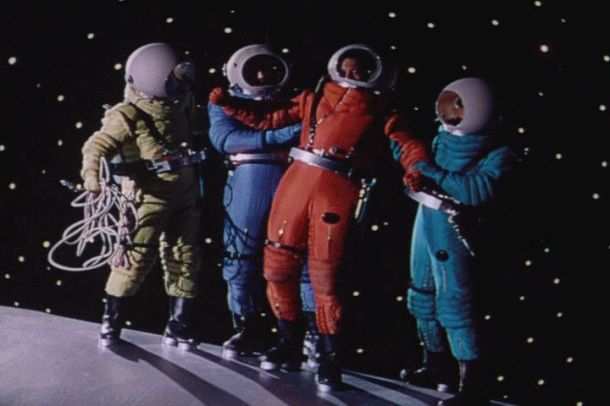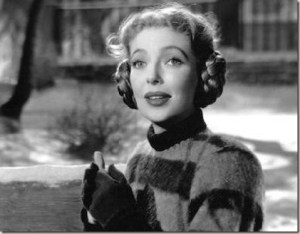
Destination Moon (1950)
Directed by Irving Pichel
United Artists
The classic era of Hollywood science fiction kicked off with Rocketship X-M (1950), but it wasn’t meant to be that way.
Producer George Pal’s Destination Moon was a lavish Technicolor production two years in the making that endeavored to depict space travel as realistically as possible. Rocketship X-M was a quick cash-in that was shot in less than three weeks with a budget of less than $100,000, which is how it was able to beat Destination Moon into theaters by about a month.
As a science fiction fan, I can’t help but be impressed by Destination Moon. Its dedication to scientific accuracy is admirable, and for 1950, its special effects are top-notch. On the other hand, as a fan of compelling drama, I have to admit that Rocketship X-M has a more engaging script, better actors, and is more fun to watch.
This is the problem with most “hard sci-fi,” which Destination Moon most definitely is. The ideas are fascinating, but the presentation is pretty dry.
The director of Destination Moon, Irving Pichel, understood this, which is perhaps why the second reel of the movie depicts a group of men watching a film strip that explains space travel in a fun and funny way with our old friend Woody Woodpecker.
Unfortunately, other attempts to inject fun into the film, like a last-minute replacement on the crew named Joe (Dick Wesson), who’s from Brooklyn and provides comic relief by pronouncing the word “work” as “woik,” aren’t as successful.
Destination Moon is based on Robert A. Heinlein’s 1947 novel Rocket Ship Galileo, which I read a few years ago. The basic idea of a mission to the moon carried out by a small crew — as well as a general commitment to scientific accuracy — is retained in the film version, but little else is. Heinlein’s novel was the story of a trio of teenaged boys reaching the moon with the help of their uncle. Once on the moon, they thwart a plot by Germans intent on establishing a Fourth Reich with the moon as their base.
The film version dispenses with the “boys’ adventure” aspect of Heinlein’s novel, as well as the idea of an enemy force already present on the moon. (Although a character in the film does state that the U.S. must reach the moon before a foreign nation is able to establish a missile base there.)
These storytelling decisions all makes sense, since Destination Moon was intended to be a realistic film.
Even though Destination Moon doesn’t have the same dramatic verve as Rocketship X-M, and even though some of its science is dated, it’s still a tremendously successful science-fiction film, and holds up well today, provided you’re a “serious” sci-fi fan.
Sure, some of the effects look hokey today, but it’s not for nothing that the film won an Academy Award for best visual effects.




